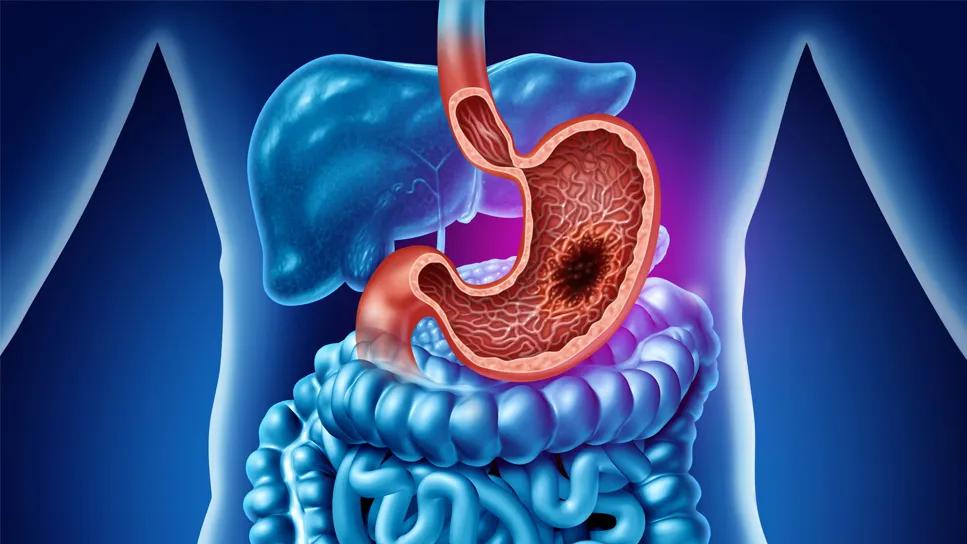Endoscopic ultrasound over routine endoscopy

A few decades ago the leading cause of death for patients with familial adenomatous polyposis (FAP), a hereditary cancer syndrome where polyps grow in the colon and rectum starting as early as the teenage years, was colorectal cancer (CRC). Many died of CRC before the age of 40 unless the colon was removed.
Advertisement
Cleveland Clinic is a non-profit academic medical center. Advertising on our site helps support our mission. We do not endorse non-Cleveland Clinic products or services. Policy
Today, at risk, FAP patients undergo genetic testing to see if they have inherited the mutation that causes FAP and have their colons’ checked for polyps and removed before CRC develops. Nearly all patients will develop colon cancer without surgery. After colon surgery patients continue monitoring of their rectum or surgically created pouch for polyps in addition to checks for polyps in the stomach and upper small intestine called the duodenum. Duodenal cancer is a known second leading cause of cancer in FAP, but the stomach polyps, which are universally present in FAP patients, were never thought to be a concern.
Carol A. Burke, MD, gastroenterologist and director of the section of polyposis in the Sanford R.Weiss Center for Hereditary Colorectal Neoplasia, and her colleagues have been caring for generations of FAP patients for decades and noted a recent sudden rise in the incidence of gastric cancer in their FAP patients. “This was stunning to me as gastric cancer has not been previously reported to be a risk for non-Asian FAP patients,” Dr. Burke says. “This caused us to question the approach to surveillance and treatment of stomach polyps and to formulate new recommendations for monitoring FAP patients.” She, Amit Bhatt, MD, gastroenterologist and Gautam Mankaney, MD, a third-year gastroenterology fellow, published a paper, describing this phenomenon in Familial Cancer.
“Our FAP patients were getting their routine endoscopy surveillance (EGD) but developing advanced, and the majority of the time, metastatic, untreatable and fatal gastric cancer,” Dr. Bhatt says, “so endoscopic surveillance was failing them”.
Advertisement
The three studied the endoscopic characteristics of those patients who get cancer and began to apply a different approach to endoscopic surveillance to detect gastric cancer at an earlier stage. “The upper stomach in high risk patients was carpeted with a thick mounds of stomach polyps,” says Dr. Bhatt, “and we started to think that since the (endoscopic) camera was only looking at the surface of those polyps, cancer might be beneath, within or underneath the thick mounds of surface polyps.”
Dr. Mankaney and his coauthors analyzed the health records of 767 FAP patients enrolled in a hereditary colon cancer registry who underwent one or more upper endoscopies between January 2001 and November 2016.
No cases of of gastric adenocarcinoma was seen since the start of the database in 1979 until 2006. All told they found 10 cases, 1.3 percent, between 2006 and 2016, resulting in a standardized incidence ratio of 140.
All of the patients had carpeting of fundic gland polyposis — when the normal gastric mucosa is covered entirely in polyps. They also had polypoid masses of gastric polyps in the proximal stomach including the fundus and body. The mean age at cancer diagnosis was 57 years and six were female. Of the six diagnosed with metastatic disease, five died within a mean 6 months after diagnosis. One is free of disease after receiving palliative chemoradiotherapy.
All patients with stage I disease underwent curative gastrectomy and none died of cancer.
During their years of surveillance, patients underwent an average of 9.7 EGDs with a mean interval between EGDs of 1.78 years. EGD was performed at intervals based on the duodenal stage of polyposis with random sampling of gastric polyps and targeted resection of polyps greater than 9 mm or of unusual appearance.
Advertisement
The group changed their approach to surveillance of FAP patients with high risk gastric features (carpeting and mounds) in an effort to prevent or detect early cancer. They are now using debulking of polypoid mounds and endoscopic ultrasound (EUS).
Dr. Bhatt and colleagues performed an EGD and EUS on a high-risk FAP patient with massive gastric polyposis. Endoscopic biopsies taken throughout the areas of polyposis did not identify a cancerous lesion, but the EUS was able to identify and sample a 1.5cm lesion lying beneath the surface of the polyposis. The patient underwent a gastrectomy, and pathology confirmed a stage 1A gastric adenocarcinoma consistent with what was seen on EUS. The patient then underwent curative surgical section. A video and manuscript of this procedure were published in Gastroenterology.
“Since we changed our approach of our high risk gastric polyposis FAP patients, we have detected gastric cancer at an early stage,” Dr. Burke says.
Advertisement
Advertisement

Study reveals key differences between antibiotics, but treatment decisions should still consider patient factors

Key points highlight the critical role of surveillance, as well as opportunities for further advancement in genetic counseling

Potentially cost-effective addition to standard GERD management in post-transplant patients

Findings could help clinicians make more informed decisions about medication recommendations

Insights from Dr. de Buck on his background, colorectal surgery and the future of IBD care

Retrospective analysis looks at data from more than 5000 patients across 40 years

Surgical intervention linked to increased lifespan and reduced complications

Diagnostic and management pearls for an emerging condition linking tick-bites to meat allergy